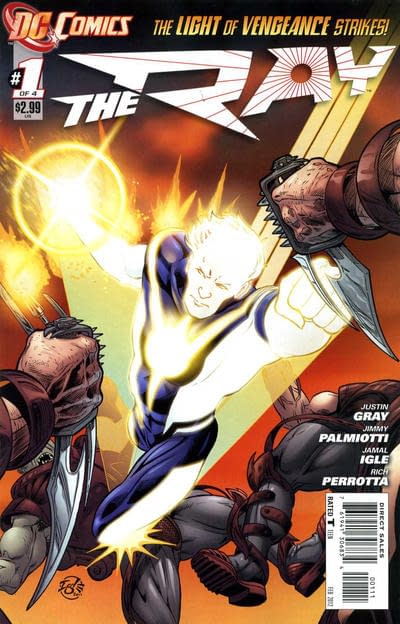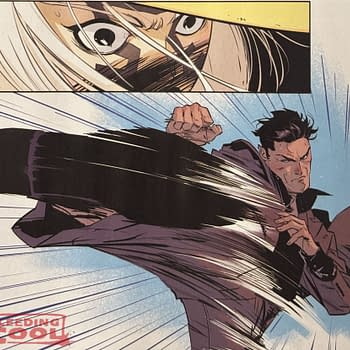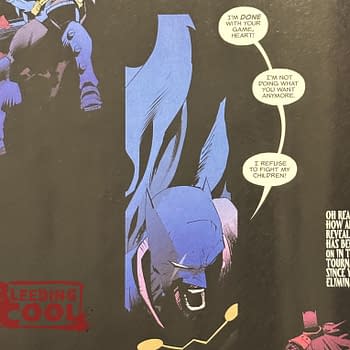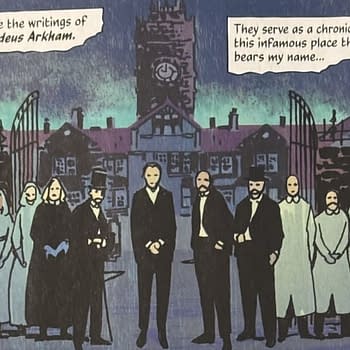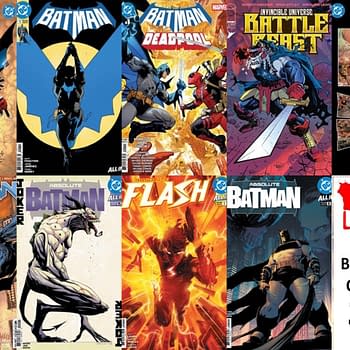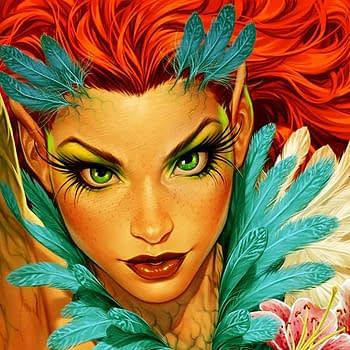Posted in: Comics | Tagged: jimmy palmiotti, joe quesada, justice league, justin gray, the ray, will eisner, young justice
Four Generations Of The Ray
This past Wednesday, DC released The Ray, Volume III, #1, bringing us the fourth incarnation of the Ray, this one a Korean-American named Lucien Gates. Despite having been around since 1940, three of the four, and all three volumes, have all come within the last 20 years.
The Ray (I – Happy Terrill)
The first man to hold the title of the Ray was Langford "Happy" Terrill, one of the heroes in Quality Comics' stable. Created in 1940 by artist Lou Fine and (presumed) writer Will Eisner, the Ray debuted in Smash Comics #14, cover-dated September 1940, making him Quality's second superhero, following Eisner's Uncle Sam. The Ray's origin was far from deep, with the explanation for his powers being something to the effect of exposure to lightning and sunlight while in a balloon.

Despite the horrific origin story, the Ray would appear in Smash in every issue until #40, cover-dated February 1943. Outside of Smash, the Ray would make just one other Golden Age appearance, in Uncle Sam Quarterly #2, alongside Black Condor, Uncle Sam, Hercules (Quality's version, a hero whose real name was Joe Hercules that appeared in the first 20 issues of Hit Comics), and Quicksilver (who is now better known as Max Mercury).

This story would serve as the set-up for Freedom Fighters, which would not come for another 2 ½ years. In Freedom Fighters, the Quality characters battled against Nazis in a world, Earth-X, where the struggle with the Nazis never ended.
This series would run for 15 issues before cancellation, with their storyline intended to finish in Secret Society of Super-Villains, only to have that series felled by the DC Implosion. The Ray would appear in his first solo feature in 35 years in Black Lightning #11, with a planned follow-up in Black Lightning #12 instead popping up in Cancelled Comic Cavalcade #1. The Ray would also appear in Cancelled Comic Cavalcade #2, with the final stories of the Freedom Fighters.
Outside of a minor appearance in DC Comics Presents #62, the Freedom Fighters would remain in limbo until their return courtesy of Roy Thomas in All-Star Squadron and America vs. the Justice Society.
Then, the Crisis and back to obscurity until writer Jack C. Harris and young artist Joe Quesada decided it was time for an all-new Ray. This time, it would be one that was actually more than a generic hero with a catchy name.
Key Issues:
- Smash Comics #14 – the Ray's first appearance. Our Price: $4,500
- Uncle Sam Quarterly #2 – cameos with all of Quality's heroes. Our Price: $2,000
- Justice League of America #107 – "Crisis on Earth-X." Our Price: $50
The Ray (II – Ray Terrill)
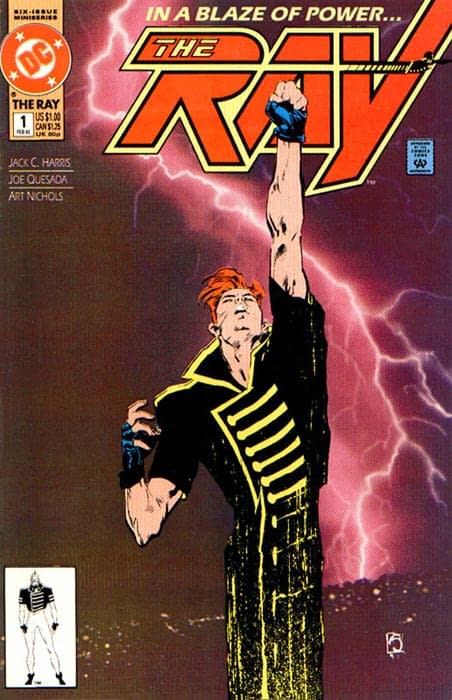
In a brilliant miniseries by Harris and Quesada, we were introduced to a young, vibrant character with a great new look and a far more contemporary feel. However, after the final issue of the mini, Ray would not appear again for six months, popping up in February 1993 in both Black Condor (#9) and in Justice League America (#71). Ray would appear in two issues of Black Condor while becoming a regular with the League, staying around for 20 issues.
As a member of the JLA, the Ray would receive his own regular series starting in May 1994, and with it would come some controversy. Rather than turning to Harris to write the regular series after inventing the new generation Ray, the book went to Christopher Priest. Priest, under the name Jim Owsley, just happened to be the editor of the miniseries, and this created more than a tad bit of controversy.

His days as a solo character behind him, the Ray would pop back up via team books, Young Justice and Uncle Sam and the Freedom Fighters, with the latter of the two coming in the role as a replacement for the character that had tried to replace him, Stan Silver.
Key Issues:
- The Ray, Volume I, #1-6 – the debut of the new Ray. Our Price: $4
- The Ray, Volume II, #1 – the first regular series for the Ray. Our Price: $3
- Justice League America #71 – the Ray joins the team. Our Price: $3
The Ray (III – Stan Silver)
Stan, we hardly knew you. After debuting with the rest of the all-new Freedom Fighters in Brave New World, Stan Silver would appear as the Ray for the first Uncle Sam and the Freedom Fighters miniseries. An agent of S.H.A.D.E. years before Frankenstein made it cool, Silver continued to work for the agency after the team broke free of them, killing the Invisible Hood before Ray Terrill showed up and treated him like the proverbial red-headed stepchild. Stan has not been seen since.
- Brave New World #1 – the Infinite Crisis aftermath, with the all-new Freedom Fighters. Our Price: $3
The Ray (IV – Lucien Gates)
And that brings us to the present. The creators of the last new Ray, Justin Gray and Jimmy Palmiotti, are back in the Ray-creating game, with former Supergirl artist Jamal Igle on pencils. There isn't a lot that we really have to go on yet about the character other than that he seems to be a likeable enough guy, his parents are baby boomer stoners, and, at least in the opinion of beachcombers on the nicest beach in Seattle, he's well-endowed.
Is it enough to keep me around for another issue? Yes, especially since there is a connection between this issue's villain and a long-time Batman adversary that I am interested in seeing playing out.


